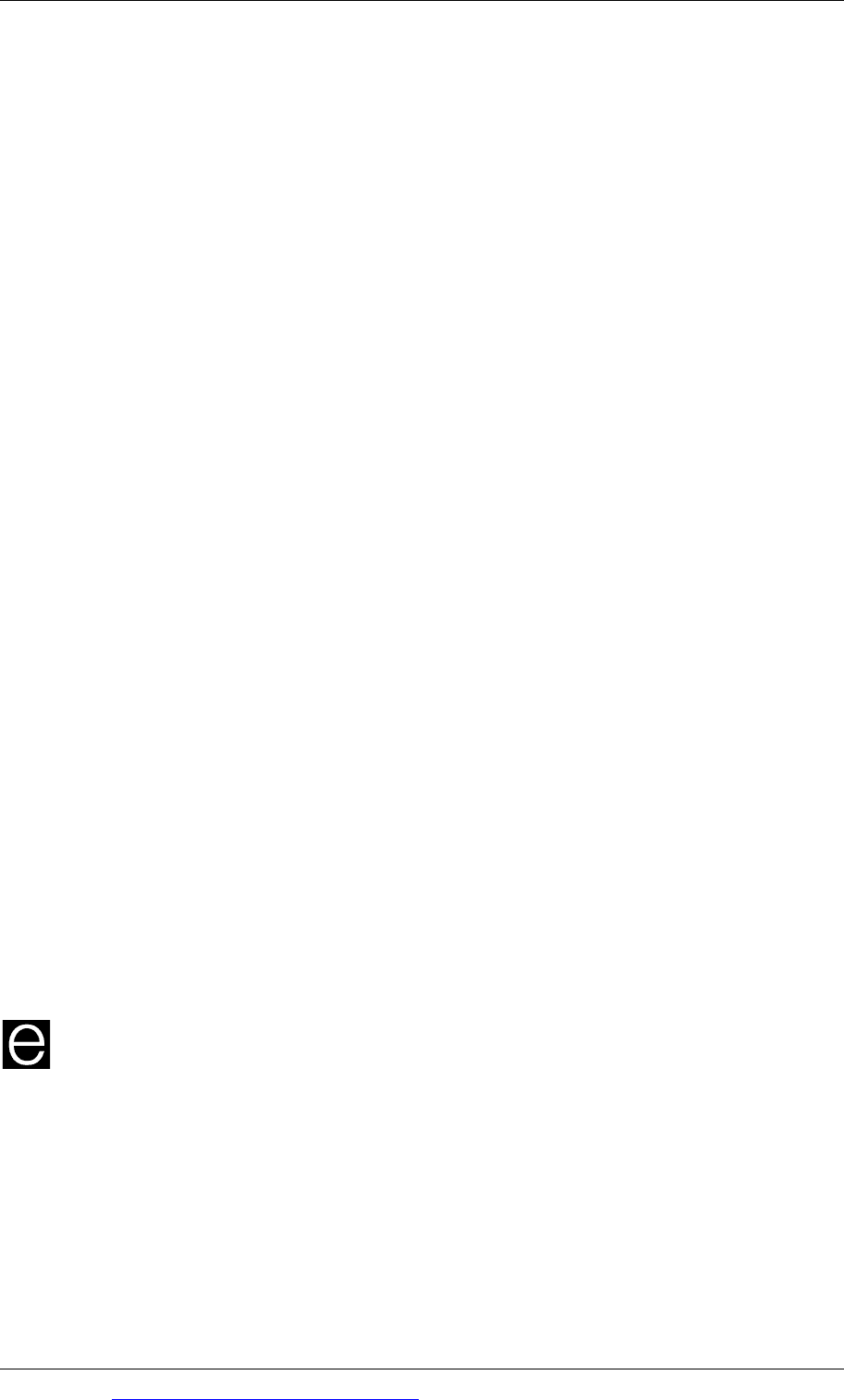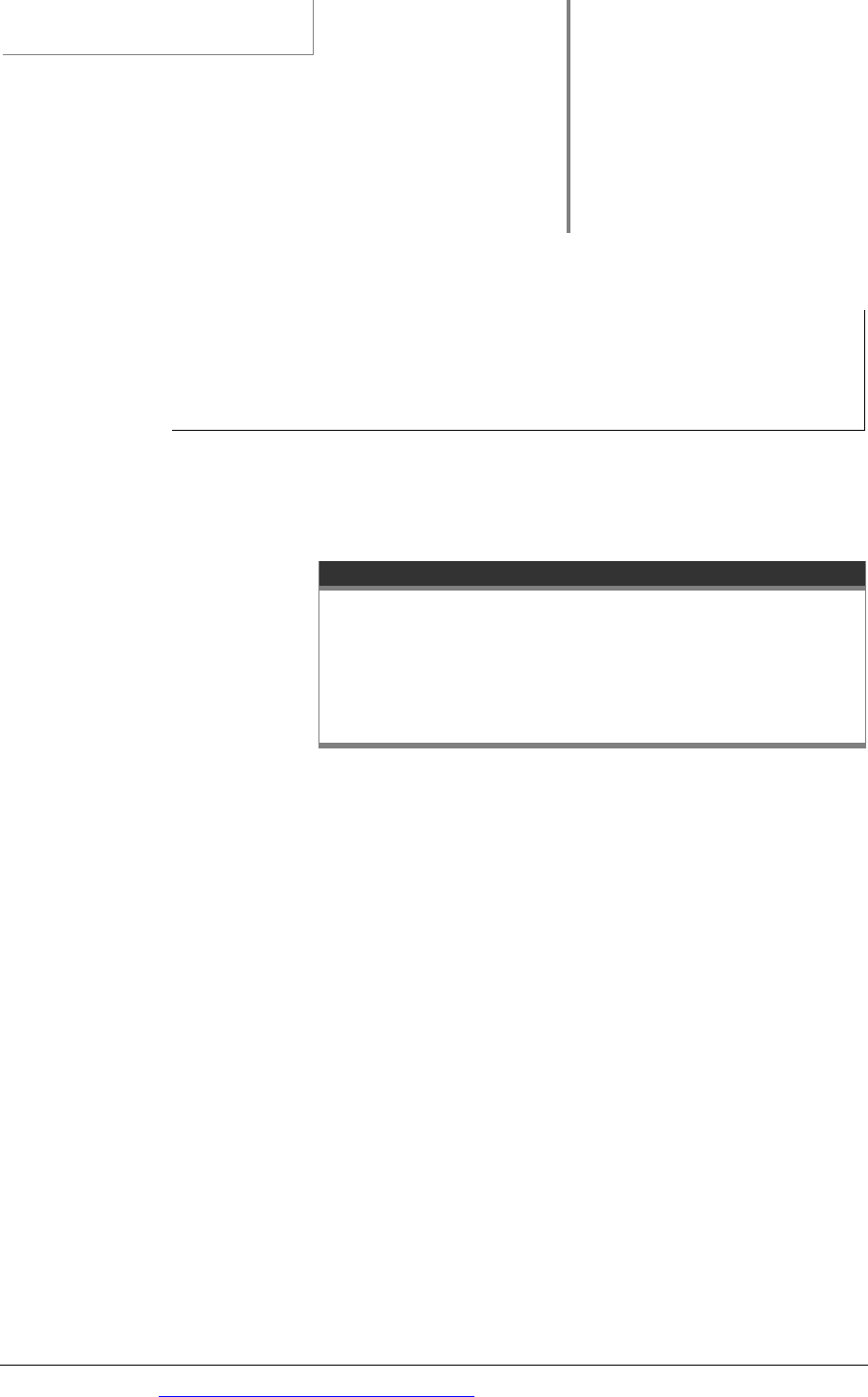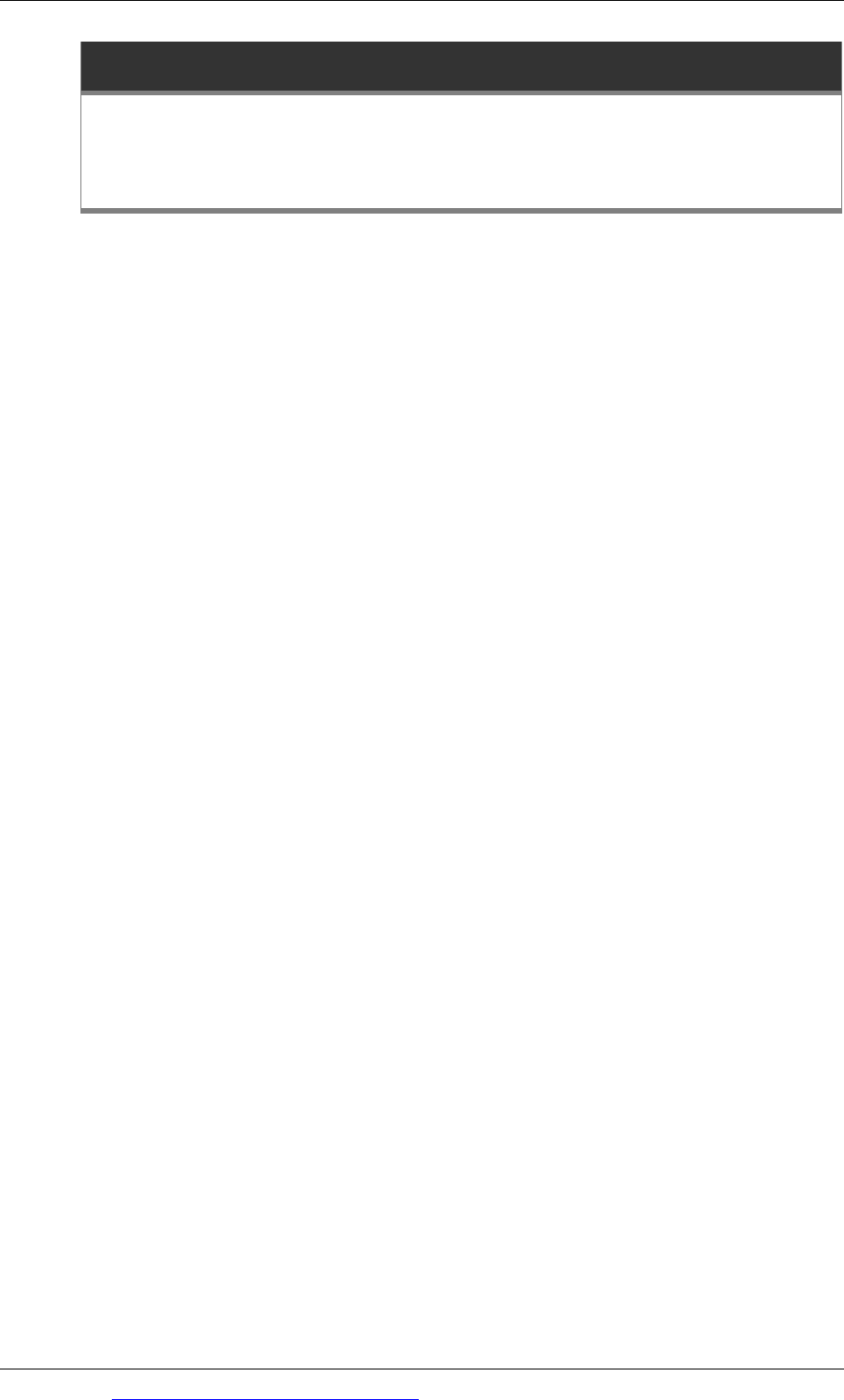ACCA F8 (INT) Audit & Assurance - 2010 - Study text - Emile Woolf Publishing
Подождите немного. Документ загружается.


Chapter 11: Substantive testing: non-current assets
© EWP Go to www.emilewoolfpublishing.com for Q/As, Notes & Study Guides 255
When tangible non-current assets are included in the statement of financial position
at a valuation, a note should disclose:
the basis used to revalue the assets
the date when the assets were revalued
whether an independent valuer was involved in the revaluation, and
the nature of any cost index that was used as a basis for calculating replacement
cost
the carrying amount of each class of assets that would have been reported if the
assets had been reported using the cost method (and so if the assets had been
valued at cost minus accumulated depreciation)
the revaluation surplus, and any movements in this surplus during the financial
period.
In addition, a note should disclose the basis used for the depreciation of each class
of assets.
When assets are disposed of, the gain or loss on disposal is the difference between
the proceeds from the disposal and the carrying amount of the asset at the date of
disposal.
When non-current assets are a significant item in the statement of financial position
of a company, the disclosures relating to them are therefore both extensive and of
some significance in terms of obtaining audit evidence.
1.2 Principal risks of misstatement
The principal risks of tangible non-current asset balances in the financial statements
being misstated relate to the following assertions:
Completeness assertion. There is a risk that assets owned by the reporting
entity have not been included in the financial statements.
Existence assertion. There is a risk that assets reported in the financial
statements do not exist (for example, they may have been sold or scrapped).
Valuation assertion. There is a risk that the assets have been incorrectly valued
(which could be due to incorrect recording, inappropriate valuations, or
incorrect depreciation calculations).
Rights and obligations assertion. There is a risk that the reporting entity does
not actually own assets that are included in the financial statements.
Presentation and disclosure. There is also a risk that the assets have not been
correctly presented and disclosed in the financial statements.
The auditor can use substantive testing to obtain evidence that the various
assertions relating to non-current assets are valid.

Paper F8: Audit and assurance (International)
256 Go to www.emilewoolfpublishing.com for Q/As, Notes & Study Guides © EWP
1.3 Substantive procedures for tangible non-current assets
The substantive procedures used by an auditor for tangible non-current assets will
therefore be designed to obtain sufficient and appropriate evidence about the above
assertions. The tests will therefore be directed to:
completeness (no understatement)
existence (no overstatement)
valuation,
rights and obligations, and
presentation and disclosure.
Possible substantive procedures to obtain this evidence are listed below.
Completeness
Obtain or prepare a schedule of tangible non-current assets, showing cost or
valuation, depreciation and carrying amount.
Reconcile this list with the corresponding opening balances (see the notes below
on substantive tests for additions and disposals).
Select a sample of assets that physically exist (and whose existence has been
verified, possibly by means of inspection by the auditor) and trace these assets to
the asset register.
Obtain or prepare a reconciliation of ledger balances for tangible non-current
assets with the asset register and investigate any differences.
Existence
Select a sample of assets from the asset register and physically inspect them.
During the inspection, note whether the asset is in use and the condition that it is
in. For an asset register held on an IT system, audit software could be used to
assist in the selection of a sample.
Establish and investigate the reasons for any assets in the sample that are not
found by the auditor.
Valuation
At cost
Land and buildings: Confirm the figures for cost with the purchase contract for
the asset and the invoices for associated costs (such as professional fees). Check
that the purchase expenditure is analysed reasonably between land, buildings
and equipment.
Equipment and vehicles: Check the cost in the financial statements against the
purchase invoices for the assets.
Review the allocation of total expenditure on non-current assets between capital
and revenue amounts.

Chapter 11: Substantive testing: non-current assets
© EWP Go to www.emilewoolfpublishing.com for Q/As, Notes & Study Guides 257
At valuation
Verify amounts in the financial statements with the valuer’s report.
Consider the reasonableness of the valuation.
Check that valuations are regularly updated.
Check the accounting for the rise or fall in value on revaluation.
Depreciation and impairment
Review depreciation rates for reasonableness in the light of the nature of the
asset, its estimated useful life and residual value.
Ensure that consistent depreciation methods are in use.
Review gains or losses on sale disposal (and the accumulated depreciation and
impairment at the time of disposal).
Consider the possibility that assets are obsolete or suffering impairment. This
matter may have to be discussed with the directors of the client company.
Check the depreciation calculations for accuracy, using the entity’s stated policy.
Again, in an IT system, audit software could be used to check these calculations.
Ensure that fully-depreciated assets are not subject to further depreciation.
Perform analytical procedures to verify the total charge for depreciation (for
example, by taking the ratio of depreciation to total asset value, and comparing
this with the ratio in previous years).
Confirm that the entity has adequate insurance for its assets.
Rights and obligations (ownership)
Land and buildings: Verify legal title to the assets by inspecting appropriate
documents (such as legal documents of ownership, or lease agreements).
Vehicles: Examine vehicle registration documents or similar documentation
giving evidence of title.
Other assets: Examine invoices or other documents transferring title.
Ensure that documents are in the name of the entity (the client company).
Review legal documents, bank documents and other documents for evidence of
any loans that are secured by charges on assets.
Presentation and disclosure
Review the disclosures in the financial statements and ensure they are correct
and clear.
Ensure the schedule of tangible non-current assets agrees to the figures in the
financial statements.
1.4 Substantive procedures – additions and disposals
In the interests of audit efficiency, auditors will pay particular attention to
substantive testing of additions and disposals of tangible non-current assets. These
transactions, together with the depreciation charge for the year, will normally

Paper F8: Audit and assurance (International)
258 Go to www.emilewoolfpublishing.com for Q/As, Notes & Study Guides © EWP
account for most of the changes between the valuations in the opening and closing
statements of financial position. Typical substantive procedures in these areas are
listed below.
Additions
Obtain/prepare a schedule of additions for the period.
Check the authorisation of the expenditure to purchase these additions.
Confirm that the total additions reconcile with the movement between the
opening and closing balances in the note to the financial statements.
Inspect a purchase invoice or other document as evidence of the cost of any
addition, and confirm that these documents are in the company name.
Verify the existence of the acquired non-current assets, by means of physical
inspection where appropriate.
Check that the entries in the accounting records are correct, confirming the
allocation of total expenditure between capital and revenue expenditure.
Disposals
Obtain/prepare a schedule of disposals for the period.
Check the authorisation of the disposals.
Verify that the cost and related accumulated depreciation have been removed
from the accounting records.
Verify the calculation of the figure for the gain or loss on disposal, and verify
that this figure has been correctly recorded in the ledger.
Discuss with management (including non-financial management) the possibility
of unrecorded disposals of assets.
As always, the precise nature of substantive procedures performed by the auditor
must reflect the circumstances involved. This is mirrored in the exam by the
particular scenarios set. For example, an entity may construct its own non-current
assets rather than buy them from an outside supplier. In this event, the substantive
procedures will focus on confirming that internal costs (materials, labour, other
direct expenses and overheads) have been properly accounted for as capital
expenditure.
Example
During the year ended 30 June Year 6, Constructico acquired freehold land at a cost
of $500,000 and built a distribution centre on it, using a mixture of sub-contract and
own labour. The distribution centre cost a total of $200,000 to construct. The
construction was completed by the end of April.
Required
Set out the audit objectives in respect of the above and the substantive procedures
you would carry out to achieve those objectives.

Chapter 11: Substantive testing: non-current assets
© EWP Go to www.emilewoolfpublishing.com for Q/As, Notes & Study Guides 259
Answer
The land and the distribution centre exist at 30 June Year 6
Visit site and confirm that the distribution centre has been built and is in use.
Constructico owns
the land and the distribution centre at 30 June Year 6
Inspect the land registry certificate or write to third party for confirmation
(e.g. bank or solicitor).
Inspect correspondence confirming that local planning permission was granted
and ensure any conditions were met.
Expenditure capitalised in respect of the distribution centre is complete
Discuss with management their policy for capitalising expenditure incurred in
building the distribution centre.
If a formal system is in place for the identification and capitalisation of
construction expenses, test that system.
Review a sample of invoices not capitalised during the period and ensure
treatment was correct.
The land and the distribution centre are appropriately valued
at cost
Inspect completion statement for purchase of land.
Obtain an analysis of costs of building the distribution centre. Inspect:
− purchase invoices for a sample of raw material and sub-contract costs
− time records for a sample of internal labour costs
− evidence in respect of any overheads capitalised.
Recalculate the depreciation charge for the year, taking into account that the
distribution centre was not completed until the end of April.
The land and the distribution centre are appropriately disclosed
in the financial
statements
Review the disclosures in the financial statements and ensure they are correct
and clear.
Ensure the schedule of costs agrees to the figures in the financial statements.

Paper F8: Audit and assurance (International)
260 Go to www.emilewoolfpublishing.com for Q/As, Notes & Study Guides © EWP
Intangible non-current assets
Substantive procedures for intangible assets
Tests of detail for purchased goodwill
Tests of detail for other intangibles
2 Intangible non-current assets
2.1 Substantive procedures for intangible assets
The risks of misstatement and substantive procedures relating to intangible assets
such as goodwill and brands should be similar to those set out above in respect of
tangible assets. The emphasis of the substantive procedures will be on:
existence and
valuation.
Remember that the only intangible assets that can be recognised in the statement of
financial position are:
purchased goodwill
intangibles having a readily ascertainable market value, and
development costs, subject to the conditions set out in IAS 38.
There should therefore be adequate audit evidence available to enable a conclusion
to be reached on these assets.
The main substantive procedures are listed below.
2.2 Tests of detail for purchased goodwill
The tests listed below relate mainly to the valuation of purchased goodwill:
Confirm that a business was acquired and confirm the consideration paid for the
business acquired. (This is a measure required to check the existence of
purchased goodwill as well as to confirm its valuation.)
Review the reasonableness of the valuation placed on the net assets acquired.
Check the calculation of the purchased goodwill (as the difference between the
consideration paid and the fair value of the net assets acquired).
Review for the possibility of an impairment having arisen.
Ensure that any impairment loss has been correctly calculated and recorded in
the ledger.

Chapter 11: Substantive testing: non-current assets
© EWP Go to www.emilewoolfpublishing.com for Q/As, Notes & Study Guides 261
2.3 Tests of detail for other intangibles
The tests for other intangible assets, other than development costs, are similar to
those that may be applied to tangible non-current assets.
The auditor should confirm the existence, the cost and the client entity’s legal
rights to the acquired assets, by looking at the purchase documentation.
Check the amortisation calculations for accuracy, using the entity’s stated policy.
Consider the possibility that the assets are suffering impairment. This matter
may have to be discussed with the directors of the client company.
Ensure that any impairment has been correctly dealt with in the ledger.

Paper F8: Audit and assurance (International)
262 Go to www.emilewoolfpublishing.com for Q/As, Notes & Study Guides © EWP

© EWP Go to www.emilewoolfpublishing.com for Q/As, Notes & Study Guides 263
Paper F8 (INT)
Audit and assurance
CHAPTER
12
Substantive procedures:
inventory
Contents
1 Introduction to substantive procedures for
inventory
2 Valuation of inventory
3 Inventory quantity: the physical inventory count
and ISA 501

Paper F8: Audit and assurance (International)
264 Go to www.emilewoolfpublishing.com for Q/As, Notes & Study Guides © EWP
Introduction to substantive testing for inventory
The importance of closing inventory for audit testing
Principal risks of misstatement
Substantive procedures for inventory
1 Introduction to substantive testing for inventory
1.1 The importance of closing inventory for audit testing
For many businesses (although service organisations are often an exception)
inventory is one of the areas needing most attention from the auditor. The reasons
for the importance of closing inventory for the auditor include the following:
Inventory is often a material item in the financial statements.
Inventory may be a high risk area, involving a high degree of judgement in areas
such as valuation. For example, judgement may be needed to estimate the stage
of completion of work in progress.
Inventory may suffer from deterioration, loss or theft that may not be recognised
in the client company’s financial statements.
Inventory may be highly technical in nature. Where inventory is complex, the
auditor may need to consider whether to rely on the work of an expert.
Establishing a closing inventory figure may be a lengthy and complex process
for the client, with a high risk of error.
Closing inventory is often not part of the double entry system, so directional
testing (tests on other areas and other balances) may not reveal misstatements in
inventory.
Audit work on inventory is often given to more experienced members of the audit
team. The work will typically be subject to a process of rigorous review and quality
control. In addition, analytical procedures are widely used to obtain evidence to
supplement the detailed substantive testing on inventory in the audit.
1.2 Principal risks of misstatement
The principal risks of inventory being misstated are due to the following:
Not all inventory that is owned by the reporting entity being included in the
financial statements (the completeness assertion).
Inventory in the financial statements not actually existing (the existence
assertion).
Inventory being incorrectly valued (which could be due to incorrect recording of
costs, or failing to value at net realisable value, if lower) (the valuation
assertion).
Inventory being included in the financial statements which actually belongs to
third parties (the rights and obligations assertion).
